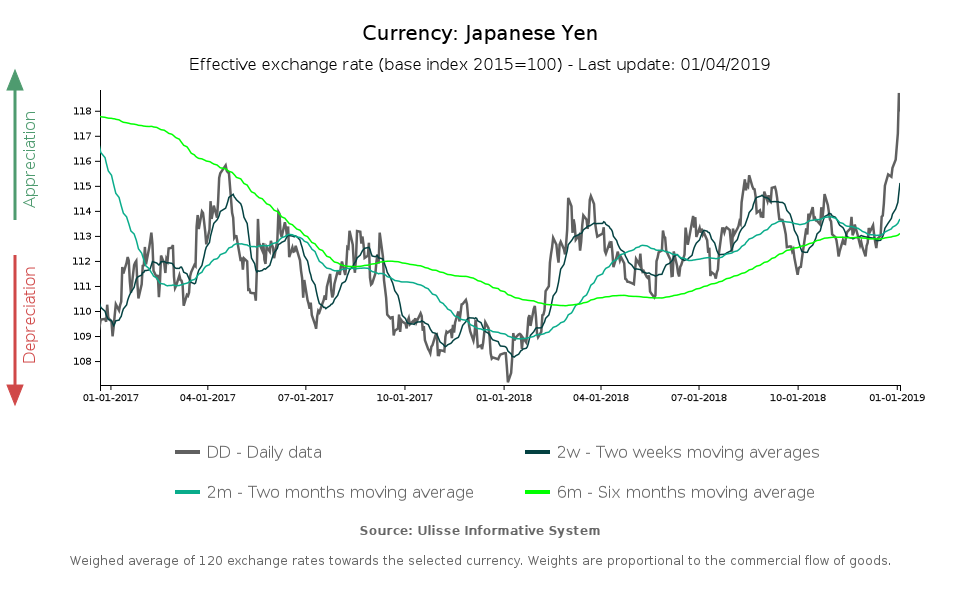Uncertainty on forex markets
Investors rush to safe-haven goods: gold, Swiss Franc and Japanese Yen
Published by Alba Di Rosa. .
Exchange rate Dollar Swiss franc Exchange rates
Log in to use the pretty print function and embed function.
Aren't you signed up yet?
signup!
On currency markets, 2019 starts with signals of uncertainty and a rush to safe-haven assets. Apart from US dollar, Swiss Franc and Japanese Yen are the currencies that appreciated the most during 2018 (as we discussed in this article last week). Strong demand for safe-haven currencies, together with purchases of gold reserves carried out by many central banks in the last few months, signals the presence of uncertainty on financial markets at the beginning of the new year.
The price of gold, on the rise since mid-November, indicates a substantial increase in demand. On January 3 it reached 1,290 dollars per ounce.
Gold price (January 2017-January 2019)
Source: StudiaBo elaborations on gold.org data.
According to gold.org data, Russia, Poland, India and Turkey are the countries that witnessed the greatest increase in their gold reserves stock between Q1-2018 and Q3-2018. In Q4-2018 Hungary experienced a strong growth in its gold reserves too, from 3.1 to 31.5 tonnes.
This rush to gold can be viewed as a safeguard mechanism against the possibility of a depreciation of US dollar in 2019, predicted by many investment banks. Gold, together with US dollars, makes up the stock of reserves held by central banks but, unlike dollars, is less influenced by US economic cycle.
Strengthening of Swiss Franc and, above all, Japanese Yen
In conjunction with the rise of gold prices, Swiss Franc entered a phase of appreciation in mid-November. Since then, the currency strengthened by more than 2% in terms of
effective exchange rate; the figure rises to almost 6% if we consider the last 12 months.
Just like the case of gold, this dynamics signals that investors look for safe assets during periods of uncertainty. Nevertheless, Franc’s appreciation looks negligible if compared to the
dynamics of Japanese Yen in the last few days.
The strengthening of Japanese currency started in mid-December and accelerated at the beginning of 2019. In the first days of January the currency appreciated by almost 2% in terms of effective exchange rate, reaching its highest levels of the last 2 years.

Will economic growth lose momentum in 2019?
Yen’s appreciation is a financial phenomenon; nevertheless, its safe-haven asset role imposes to take into account its symbolic value, which goes beyond finance and might represent a
warning signal.
Investment banks predict that growth might slow across major economies in 2019: a first tangible example comes from
Apple.
On January 2 Tim Cook announced that, in the first quarter of fiscal year 2019, revenues were lower than expected, according to preliminary estimates. The slowdown mainly concerns Chinese
market, because of factors such as the ongoing trade war, recent slowdown in Chinese economic growth and general uncertainty that, from financial markets, might have reached end consumers.
This news led Apple to fall on the stock market the next day; tensions spread across Wall Street.
Consequently, investors moved to safe-haven asset such as the Yen; its demand and price therefore increased. If this trend won’t be just temporary, Bank of Japan will have to face the possibility of an excessive appreciation, which could damage exports and take inflation back into negative territory.


